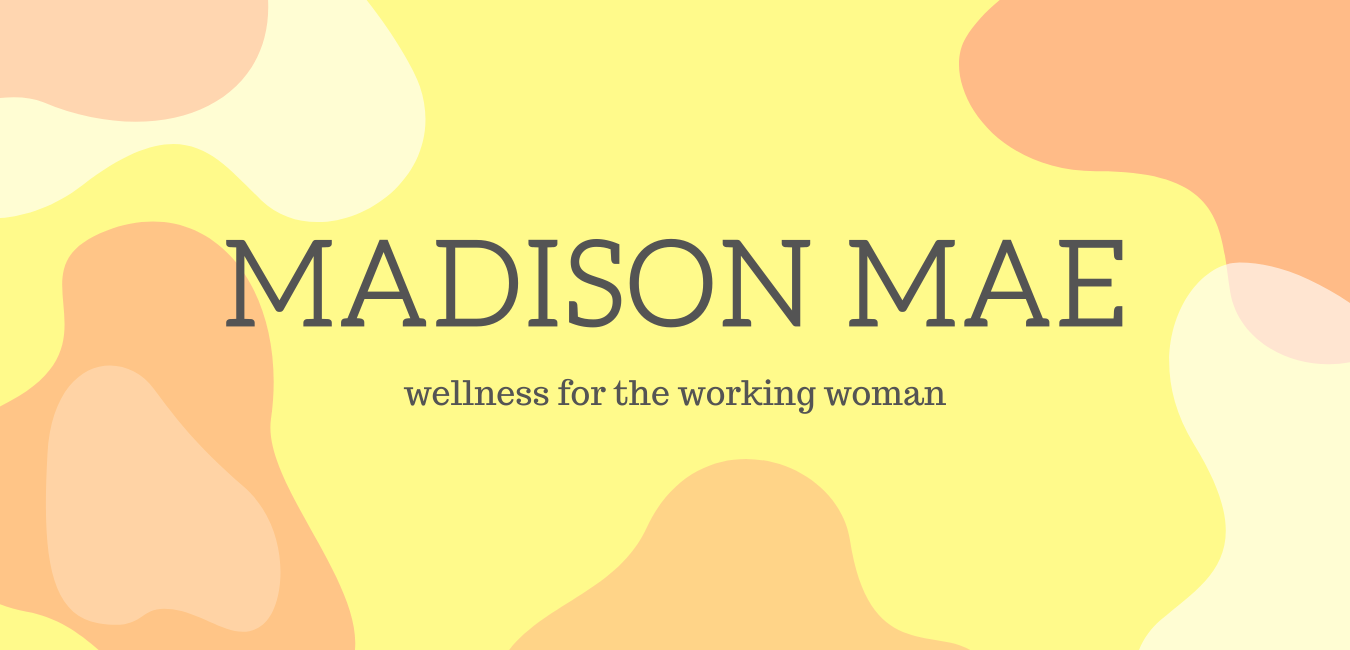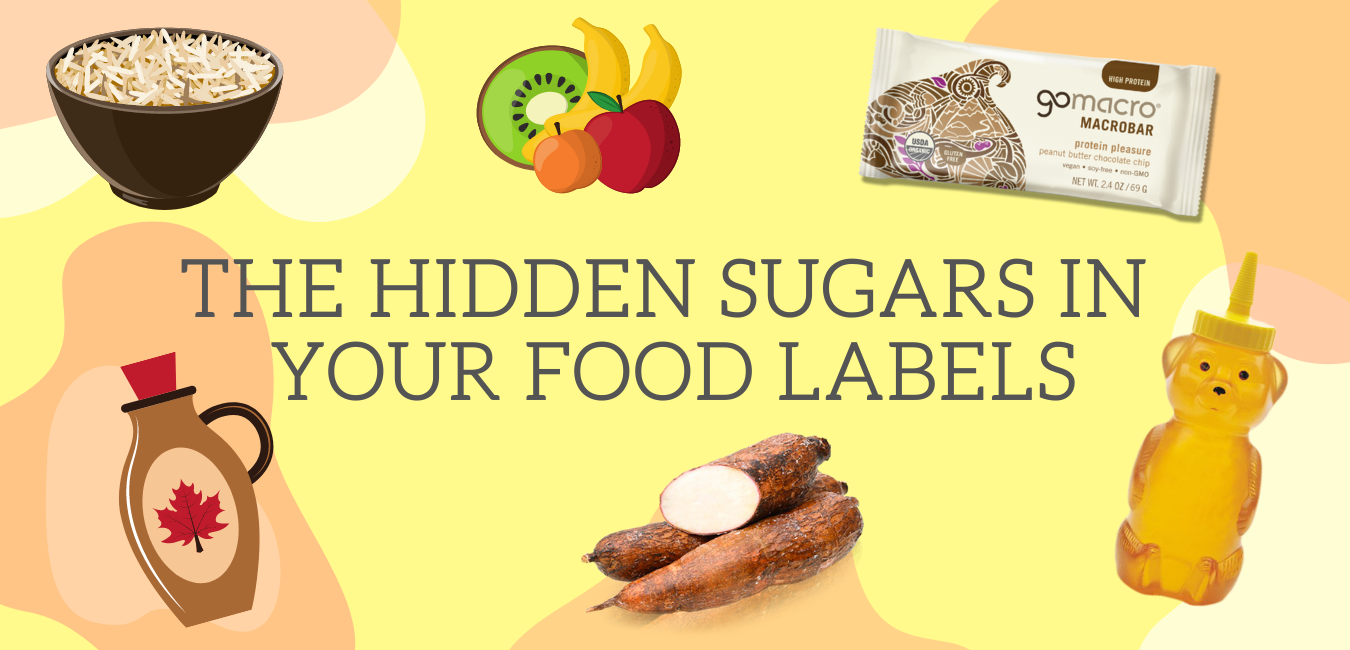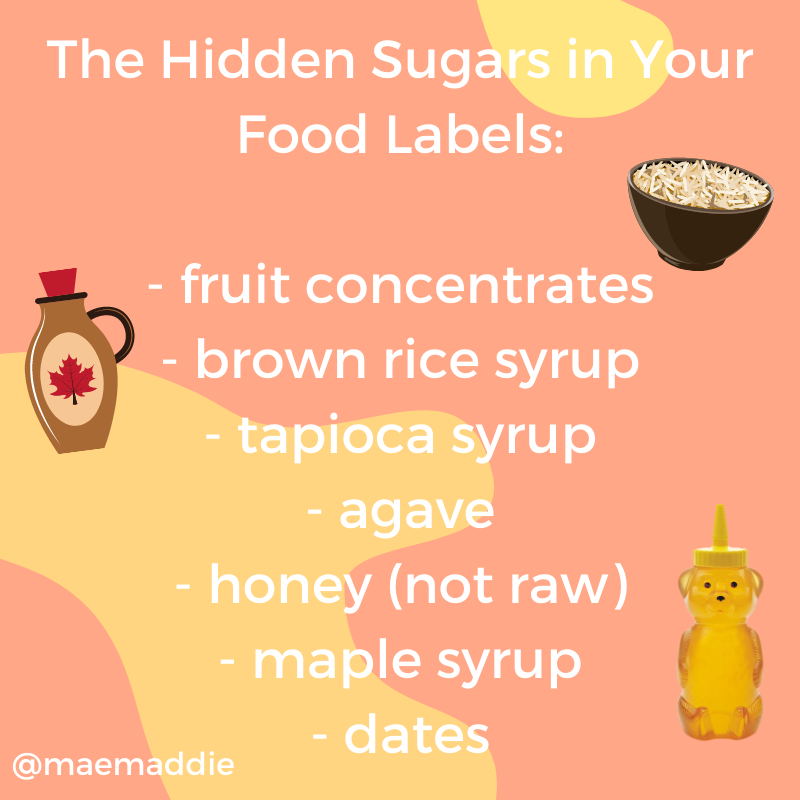The Hidden Sugars in Your Food Labels: What They Really Are and What They Mean
Sugar is sneaky. It is amazing what we know now that we didn’t know 5, even 10 years ago. As a kid my mom used to literally sprinkle white sugar on my strawberries. Now some people don’t even eat fruit because they’re scared of its sugar content. But that’s a whole different topic.
Let’s talk about the different names sugar hides itself as in processed foods. Food companies have many different ways of labeling it on packaging in order to deceive consumers.
Here are the common terms to look for:
Fruit Concentrates
You may see fruit on the label and think, oh good! It’s natural. Wrong. Yes, fruit concentrates are from real fruit themselves but they are not comparable to the actual fruit. Concentrates are fruit with the water removed. Essentially they contain all of the natural sugars and calories but none of the good stuff that you want to eat fruit for- their fiber, vitamins, and minerals. Because they lack the fiber that helps our bodies digest fruit slowly, concentrates cause a large blood sugar spike. Companies use it to cut down cost in the shipping process.
Brown Rice Syrup
This is an ingredient that is used in a lot of “healthy”, “natural” foods, go-macro bars being one of the most popular ones. The syrup is made by cooking brown rice and using enzymes to break it down into sugars. It is then strained and boiled into a syrup. It also ranks very high on the glycemic index scale, meaning it causes a huge blood sugar spike. In addition, studies have shown that brown rice syrup is high in arsenic due to the brown rice it is made from. You may want to reconsider your go-macro bars- brown rice syrup is the FIRST ingredient on the label 😱.
Tapioca Syrup
Similar to brown rice syrup, this is made by using enzymes to break down the starches found in the cassava plant. While I couldn’t find any research on how it affects blood sugar, it does have nearly the same amount of sugar per serving as sucrose. It is one to be avoided when possible.
Agave Syrup
Agave is a plant that has been used for centuries in Mexico. In order to make this syrup, the sap is sucked out of the agave plant and heated to high temperatures, or exposed to enzymes, which extract the sugars from the fiber of the plant. Agave is made of 85% fructose which has been linked to diabetes, obesity, and fatty liver disease. This is also a reason we want to avoid high-fructose corn syrup, the worst among all of the sugars.
Honey (not raw)
It is important to realize that there is a huge difference between honey and raw honey. Raw honey is full of antioxidants, anti-viral properties, vitamins, enzymes, and nutrients. It is my go-to when I want something sweet due to all of its benefits. However, honey that is not raw has been heated at high temperatures, killing all of the things that make raw honey so good for you. That little friendly bear full of honey also most likely contains high-fructose corn syrup. All of its beneficial pollen has been removed 😢.
Try to buy raw honey from your local farmer’s market or check out Bee Raw Honey, my personal favorite. Buy the Sweet Yellow Clover, it’s by far the best honey I’ve ever had.
Maple Syrup
While maple syrup is one of the better options in my opinion, it is still high in sugar. Be sure to look for pure maple syrup. It is common for companies to sell maple-flavored syrups, which aren’t maple syrup at all, or combine it with cheaper forms of sweetener such as corn syrup. Read the label to ensure you are getting 100% maple syrup.
Dates
Don’t get me wrong, I love a good date, but they do contain a lot of sugar. Luckily, they have a lot of other amazing benefits, but it is important to still be aware that they are 70-80% sugar. They are one of the better forms of it since they are natural, but don’t overdo it. Sugar is sugar.
I hope you learned what to look for on the labels of your favorite snacks and which sugar sources are better than others. There are still many other sources of sugar but I know these to be the most deceiving. I wanted to write this article to increase awareness and educate people so they can fully understand the labels they are reading and where the grams of sugar are coming from. I want everyone to have the education necessary to make their own conscious decisions about what they put into their body.


